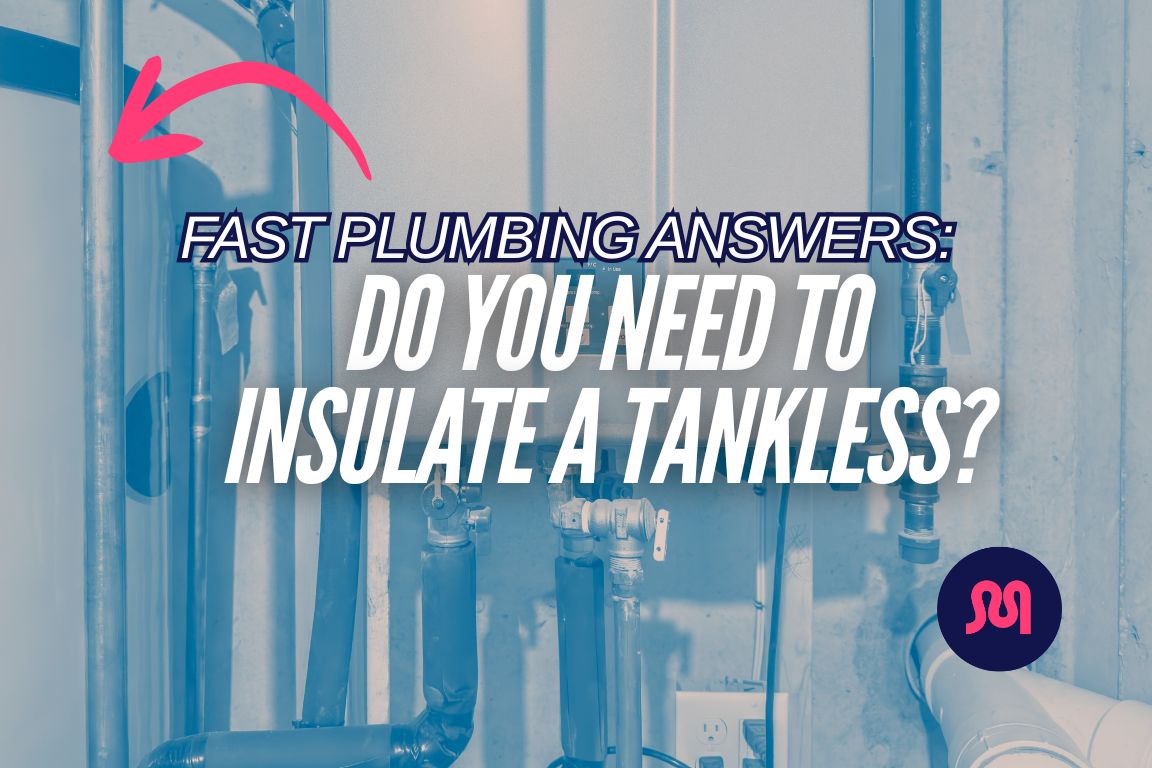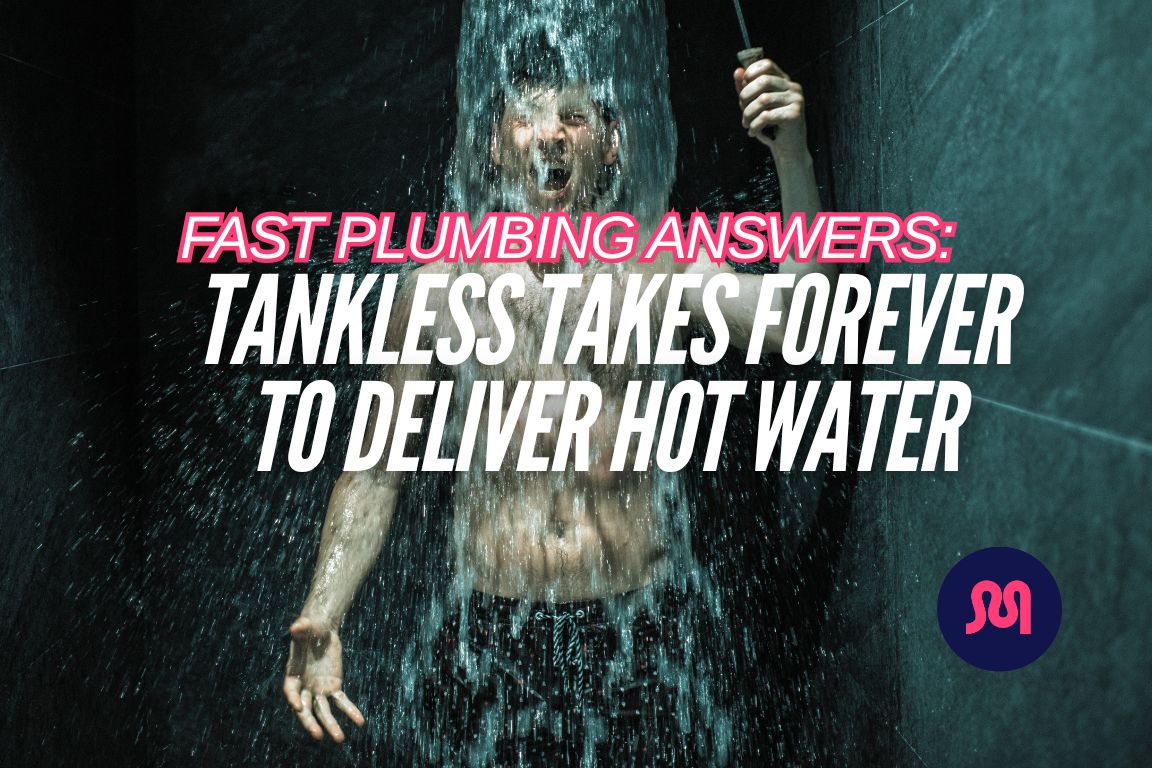Spot Repair vs Pipe Lining: Fixing Small Sewer Line Sections
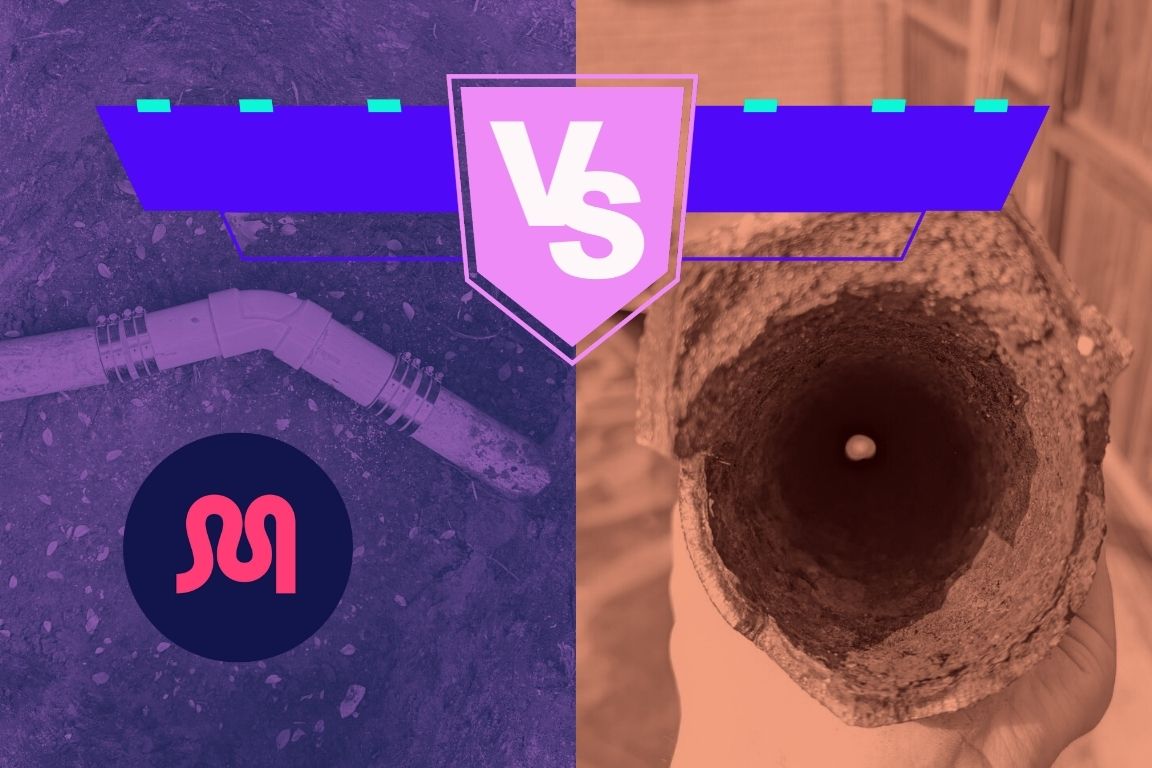
table of contents
table of contents
When a specific, isolated problem affects a small section of your sewer line, you face a choice between two repair methods: patch your sewer pipe with spot repairs, or solve the issue from within with pipe lining.
Both options aim to fix the immediate issue, but they differ significantly in technology used, disruption caused, and overall project cost.
We train our plumbers to identify the exact cause of your sewer issue, compare your repair options, and establish the single best solution to the problem. This is the advice we give our customers — and we wrote it up in a homeowner’s guide for you.
We’re Mother — a Dallas based plumbing company founded on modern service options and long-term solutions. Our research team and Master Plumbers built this comparison guide for homeowners to compare their sewer repair options and choose the best quote for their project.
Live in Dallas and need sewer repair options? Call us 7 days a week for expert, timely service.
{{sewer-line-repair-and-replacement="/services/sewer-line-repair-and-replacement"}}
The 4 Common Sewer Line Problems We’re Solving
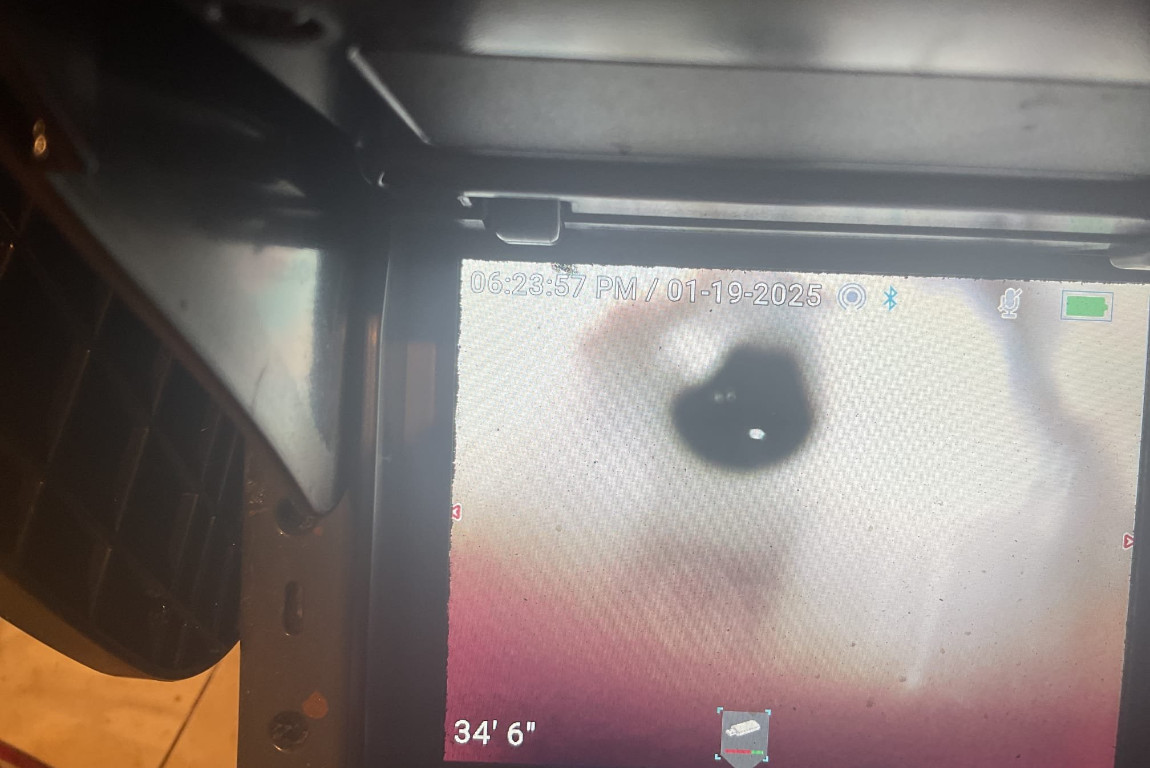
The choice between sewer line spot repairs and pipe lining addresses localized damage to your main sewer line that affects only a small segment of the pipe, typically less than 10 feet in length. These issues, if left unaddressed, can lead to frustrating plumbing problems.
Here are the 4 ways these issues manifest in your home’s plumbing system:
- Isolated Slow Drains or Localized Clogs: One specific drain might be consistently slow, or clogs occur repeatedly in a particular area, suggesting a problem unique to that section of pipe.
- Small Wet Spots or Indentations in Yard: A tiny, unexplained wet patch or a minor depression in your lawn, indicating a precise leak point.
- Pinpointed Odors: A faint sewage smell that seems to originate from a very specific spot in your yard or bathroom, suggesting a small breach.
- Recurring Camera Inspection Findings: Your plumber identifies the exact same small crack, disconnected joint, or minor root intrusion in the same short segment during successive inspections.
Don’t see your sewer line issue? Visit our comprehensive, updated guide to Dallas sewer line repair and replacement options to find the best solution for your problem.
{{best-dallas-sewer-repair-options="/blogs/best-dallas-sewer-repair-options"}}
When to Choose Spot Repairs vs. Sewer Pipe Lining
First a quick overview of each kind of repair
Spot repair is a targeted, traditional method that involves excavating and replacing only the specific, damaged section of your sewer pipe. For areas under 10 feet, this means a very localized dig.
Pipe lining, specifically Cured-In-Place Pipe (CIPP) lining, is a trenchless repair method. For small sections, it involves creating a new, seamless pipe within the existing damaged one without the need for extensive digging.
Side-by-Side Comparison Table: Spot Repairs vs Pipe Lining
*Note: Costs are estimates and can vary widely based on pipe depth, location (e.g., under concrete), soil conditions, and specific DFW market factors.
Sewer Line Spot Repairs: Great for Single Issues

What’s involved in the repair process: After using a specialized sewer camera to precisely locate the damage, a focused trench is dug directly down to the exact point for repairs.
The damaged segment of pipe (e.g., a cracked section, a broken joint) is cut out and removed. A new piece of Schedule 40 PVC pipe is then installed, securely connecting the existing healthy pipe sections. Finally, the trench is backfilled and the surface restored.
- Pros:
- Generally the most affordable upfront cost for a very localized repair.
- Installs brand new, durable Schedule 40 PVC pipe at the repair site.
- Often quicker to complete on-site once excavation is done.
- Effective for collapsed or severely broken sections where lining isn't possible.
- Cons:
- Requires excavation, leading to localized disruption of your yard, landscaping, or potentially concrete.
- Only addresses the single problem spot; doesn't improve the overall condition of the remaining older pipe.
Pipe Lining (CIPP Lining): A Short-Term Band-Aid Solution
What’s involved in the repair process: First, the existing pipe must be thoroughly cleaned (often with hydro jetting) to remove any debris, scale, or roots.
Then, a flexible liner, saturated with a special epoxy resin, is inserted into the damaged pipe through a small access point (like an existing cleanout). An inflatable bladder pushes the liner against the inner walls of the old pipe.
Once positioned, the resin is cured (hardened) to form a new, rigid pipe inside the old one. The bladder is then removed, leaving a smooth, jointless pipe.
- Pros:
- No extensive trenching is required, preserving your yard, driveway, and landscaping.
- Faster completion time; the new pipe can often be ready for use within hours or a day.
- The new liner creates a seamless pipe, preventing future root intrusion through joints.
- Cons:
- Higher upfront cost per linear foot than a simple spot repair.
- Not suitable for completely collapsed or misaligned pipes, as the existing pipe structure is needed to host the liner.
- Reduces the internal diameter of the pipe slightly.
- Requires the pipe to be thoroughly cleaned before lining, which can add to the initial process.
When to Choose Sewer Line Spot Repair
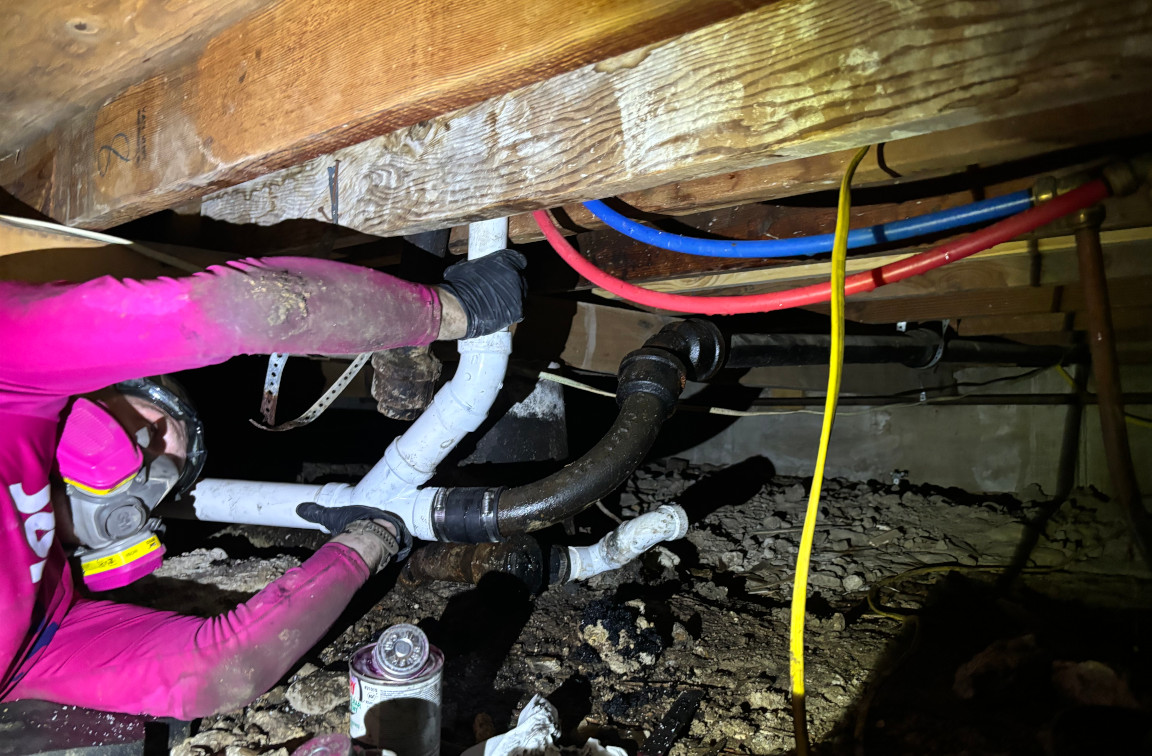
Spot repair is your go-to solution when the problem is clearly defined, small, and contained, and the rest of your sewer line is in good condition.
Real-life customer scenarios where spot repair is the better choice:
- Our camera inspection pinpointed a single, localized break. Our plumbers showed the homeowner exactly one point of failure. The pipe was completely healthy before and after that spot.
- A single tree root managed to get in through one specific joint. We cleared the root, but the joint itself was compromised. It made sense to fix that single entry point.
- A small damaged pipe section was shallow and easily accessible. A recent fence installation accidentally nicked a specific part of the sewer line. We replaced that section with new Schedule 40 PVC.
When not to choose Spot Repair: Avoid spot repair if the damaged section is under a significant, expensive structure (like a newly poured patio or pool deck) that you do not want to disturb, or if multiple, spread-out issues suggest a more systemic problem.
Don't opt for a spot repair if the camera inspection shows multiple cracks, widespread deterioration, a belly (sag) in the pipe, or recurring root issues along a long section.
When to Choose Sewer Pipe Lining
Pipe lining shines when minimizing disruption is paramount and the existing pipe has enough structural integrity to serve as a host for the new liner.
Real-life customer scenarios where pipe lining is the better choice:
- Localized sewer line damage appeared under an existing driveway. We accessed the damaged pipe section through an outdoor cleanout and inserted the liner.
- We found multiple tree root intrusions in a hard-to-reach pipe section. Instead of tearing up landscaping, we found an access point further down the sewer line to insert the pipe liner.
- The homeowner’s budget didn’t allow for partial replacement. We used CIPP lining to protect the damaged pipe for 3-5 years while the homeowners saved up for their inevitable partial sewer line replacement.
When not to choose Pipe Lining: Do not choose pipe lining if the damaged pipe section is completely collapsed, severely misaligned (e.g., sections are offset by a large margin), or if there are missing sections of pipe. The existing pipe must be mostly intact to serve as a host for the liner.
Don’t expect pipe lining to provide a long-term solution. It’s a quicker fix that delays the inevitable — you’re still left with a damaged sewer line and a slightly smaller interior diameter.
Mother Modern Plumbing’s Recommendation

For small sewer line sections under 10 feet, the choice between spot repair and pipe lining depends heavily on two key factors:
- The exact nature and severity of the damage, and
- The location of the pipe relative to valuable property features.
In 9 out of 10 cases, spot repairs are our recommendation. Pipe lining is a viable solution in a handful of ultra-specific scenarios.
We only recommend pipe lining when the damage is amenable to a trenchless solution (e.g., cracks, offset joints, minor root intrusion) and the pipe is located under landscaping, a driveway, or any area where excavation would cause significant disruption and cost.
It offers a fast, clean, and durable repair with minimal impact on your property — but it’s not a “forever fix”.
We recommend a spot repair for most localized pipe damage issues — such as deep single penetrations, missing sections, or joint misalignment. These issues cannot be addressed by lining.
It's also the superior long-term choice for shallow, easily accessible breaks under open ground. You gain the benefit of a new Schedule 40 PVC pipe segment that can last 100 years.
What’s all this going to cost? Price out your project in our in-depth guide to the cost of sewer line replacement services in the Dallas area.
{{main-sewage-line-replacement-best-texas-guide="/blogs/main-sewage-line-replacement-best-texas-guide"}}
Call Mother for Expert Dallas Sewer Line Repair
Still not sure whether spot repairs or CIPP lining is right for your Dallas area home? Worried your current plumbing quotes are too high, too invasive or incomplete?
Call Mother 7 days a week for a thorough inspection of your Dallas sewer line. We’ll identify the problem with our non-invasive sewer camera inspection and hydrostatic testing services. Then, we’ll walk you through the pros and cons of each service option in simple terms, with no pressure.
Whether you need simple spot repairs or cured-in-place pipe lining, trust our plumbing experts for an honest second opinion and a long-term solution for your home.
{{sewer-line-repair-and-replacement="/services/sewer-line-repair-and-replacement"}}
Common Q’s about Drain & Sewer
Can I switch from spot repair to sewer line replacement later?
Yes, you can always transition from a spot repair to a partial or even complete replacement later on if new issues arise. However, doing a spot repair now might mean you're paying for multiple excavations over time if your pipe continues to fail.
How long do sewer line spot repairs take?
Expect your spot repairs to take 1-3 days. Simple patches (like single tree root intrusions) are often completed in one appointment on one day.
How much sewer pipe damage can spot repairs fix?
Spot repairs are designed to fix localized breaks and intrusions that span 10 feet or less. Sewer line damage between 10 and 50 feet in length requires partial sewer line replacement, a more labor-intensive solution due to increased excavation and pipe replacement.
How long does CIPP lining take?
Most CIPP lining projects are completed between 1-3 days. If you have a clean, direct access point like a sewer line cleanout, the project should take less time.
Does pipe lining really last 50 years?
No. We’ve seen other online guides state that new epoxy pipe lining lasts 50+ years, and our Master Plumbers cannot agree with this assessment. CIPP lining is generally used as a short-term fix while homeowners save budget for long-lasting sewer line replacement.
Is relining cast iron pipes worth it?
Pipe lining in cast iron is like putting a Band Aid on a broken arm. You’re not addressing the root problem (outdated pipe materials), so your liner will eventually sustain damage.
Is pipe lining environmentally friendly?
Pipe lining is considered environmentally friendly due to minimal excavation, reducing soil disturbance and the need for significant landscape restoration.


